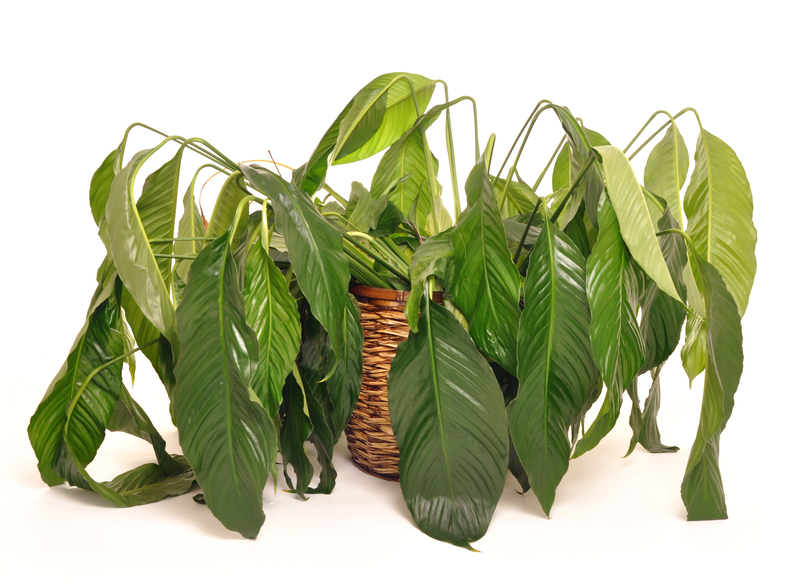3 Innovative Tips for Managing Weeds Like a Pro
Posted on 25/08/2025
3 Innovative Tips for Managing Weeds Like a Pro
Controlling weeds is one of the most persistent challenges faced by gardeners, landscapers, and farmers alike. Tackling the green invaders with innovation not only saves time but also ensures a healthier and more productive landscape. Whether you're maintaining a backyard paradise or managing large tracts of agricultural land, mastering modern weed management strategies is essential for long-term success.
In this comprehensive guide, you'll uncover three innovative tips for managing weeds like a pro. These expert-backed techniques blend science, technology, and sustainable practices to transform your weed control routine. Get ready to say goodbye to overgrown beds and annoying invaders -- and hello to lush, weed-free spaces!
Why Innovative Weed Management Matters
Traditional weed management can be labor-intensive and often inefficient. Relying solely on hand-pulling or broad-spectrum herbicides may yield limited or even counterproductive results. Innovative weed control strategies not only boost efficiency, but also help sustain soil health, protect biodiversity, and minimize chemical usage.
- Increased Efficiency: Advanced methods often require less labor and produce longer-lasting results.
- Environmental Health: Reducing reliance on chemicals promotes a healthier ecosystem.
- Sustainable Practices: Forward-thinking techniques support soil structure and future plant growth.
- Cost Savings: Efficient methods reduce the need for repetitive interventions, saving both money and resources.
Now, let's dive into the top 3 innovative weed management tips for professionals and home gardeners.

Tip 1: Smart Mulching -- More Than Just a Cover!
Mulching is a classic method for weed suppression, but modern advances have taken this technique to the next level. Today's weed management pros leverage smart mulching strategies to not only block sunlight from reaching weed seeds but also enhance soil health and boost plant growth.
How Smart Mulching Works
Traditional mulch acts as a barrier against weed emergence by covering the soil. However, smart mulching involves integrating innovative materials, techniques, and timing for maximum effect.
-
Organic Mulch Blends:
- Mix compost, shredded bark, and leaf mold for both weed suppression and gradual nourishment.
- Utilize straw or grass clippings in edible gardens to keep weeds at bay while boosting soil microbiota.
-
Preemptive Solarization:
- Use clear plastic sheets to solarize soil before planting. This technique cooks weed seeds before planting time.
-
Living Mulch:
- Plant ground covers such as clover or creeping thyme between rows. These living mulches outcompete weeds for space and sunlight while adding beauty.
- Reduces weed seed germination by blocking light.
- Improves soil moisture retention, reducing watering needs.
- Adds valuable nutrients to the soil as organic matter breaks down.
- Encourages beneficial insects and microbes for natural pest control.
Pro Tip: For maximum weed management, apply mulch in layers 2-4 inches thick, and refresh high-traffic areas annually to maintain effectiveness.
Tip 2: Harness Precision Technology for Weed Control
The science of weed control has been transformed by advances in technology. From AI-powered sensors to targeted herbicide application, precision tools allow pros to manage weeds with surgical accuracy.
The Future of Weed Management: Robotics and Smart Sensors
Robotic weeders and intelligent devices are quickly becoming essential in both agriculture and large landscape management. These innovative weed solutions help reduce labor costs, minimize chemical use, and increase the effectiveness of every intervention.
Game-Changing Technologies Include:- AI-Powered Weeding Robots:
- Autonomous machines equipped with cameras identify and remove weeds without harming crop plants.
- Some systems use laser technology to destroy weeds at the soil surface.
- Selective Herbicide Applicators:
- Advanced sprayers target only weeds, reducing chemical usage by up to 90% compared to broadcast spraying methods.
- Soil and Moisture Sensors:
- Sensors detect weed hot spots and direct attention precisely where it's needed, improving overall efficacy and reducing waste.
Integrating Precision Technology is not limited to large-scale operations:
- Home garden tools like the Flame Weeder use thermal energy to target weeds safely, without chemicals.
- Battery-powered hand tools offer efficient weed removal for raised beds and tight spaces.
By adopting these smart technologies, you ensure weed management is both thorough and environmentally conscious.
Tip 3: Biological and Cultural Control -- Let Nature Be Your Ally
Harnessing natural systems for weed management is both innovative and sustainable. Biological weed control uses living organisms--such as insects or specific microbes--to reduce weed populations, while cultural practices focus on proactive garden or field management to suppress weeds before they start.
Nature-Based Weed Suppression Techniques
-
Introducing Natural Enemies:
- Certain insects and fungal pathogens can be introduced to target and reduce specific invasive weeds, as proven in large programs against pests like leafy spurge or St. John's wort.
-
Cover Cropping:
- Planting fast-growing cover crops (like buckwheat, winter rye, or hairy vetch) during off-seasons smothers weeds, fixes nitrogen, and improves soil structure.
-
Crop Rotation and Interplanting:
- Changing planting patterns each year disrupts weed life cycles and reduces the chance of a single weed species becoming dominant.
- Interplanting compatible crops can deprive weeds of the resources they need to thrive.
-
Soil Health Management:
- Well-balanced, healthy soils foster robust crops that outcompete weeds for nutrients and sunlight. Regularly add organic matter, avoid compaction, and test soil pH for optimal plant performance.
Fun Fact: Certain fungi like Phoma macrostoma are used as bioherbicides, selectively inhibiting the growth of broadleaf weeds without harming grasses.
- Eco-friendly: No need for chemical herbicides--nature does the heavy lifting.
- Long-term control: Many biological and cultural methods provide season-long or even multi-year benefits.
- Improved soil health and productivity: Diversity in plant life naturally suppresses weeds and promotes vigorous crops.
Bonus Tips: Combining Strategies for Maximum Impact
Integrated Weed Management (IWM) is the professional's secret weapon. The most effective pros combine physical methods (like hand weeding or hoeing), mulching, technology, and cultural practices for a robust, multi-layered approach.
Applying the 3 Innovative Weed Management Tips Together
- Use smart mulching in perennial beds to reduce weed germination, then supplement with quick spot-removal using a battery-powered weeder.
- Plant cover crops after harvest on large plots, solarize garden soil in the spring, and rely on organic mulch blends for ongoing weed prevention.
- Adopt precision tools for tricky spots, while practicing crop rotation and encouraging beneficial insects for long-term success.
By diversifying your weed management toolbox, you create a resilient landscape or agricultural system that's far less prone to weed outbreaks.

Frequently Asked Questions (FAQs) -- Managing Weeds Like a Pro
1. Is organic weed control as effective as chemical methods?
Organic weed management can be just as effective--or even superior--when approached with integrated strategies. Combining mulching, biological controls, crop rotation, and precision removal methods creates healthy soils and resilient crops that naturally resist weed pressure.
2. How often should I replace mulch for optimal weed suppression?
For most landscapes, mulch should be replenished once a year or whenever layers thin to below 2 inches. Reapply after heavy rains or where weeds start peeking through to maintain a solid barrier. In high-traffic or erosion-prone areas, consider spot-checking every few months.
3. Can smart technology really help in small home gardens?
Absolutely! Portable battery-powered weeders, soil moisture sensors, and handheld flame weeders put high-tech solutions within any gardener's reach. As technology becomes more affordable, even small plots can benefit from innovative weed control strategies.
4. Are there natural ways to prevent weeds in vegetable gardens?
Yes. In addition to mulching and manual removal, establishing dense cover crops, practicing no-till methods, and interplanting quick-growing annuals can all help keep vegetable beds weed-free without harsh chemicals.
Conclusion: Empower Yourself with Innovative Weed Solutions
Effective weed management doesn't have to be a losing battle. With these professional weed management tips, you're equipped to take on even the most stubborn weeds. By combining smart mulching, precision technology, and nature-inspired practices, you'll cultivate a thriving, beautiful, and weed-resistant landscape.
If you're striving for healthy gardens, greener lawns, or high-yield crops, these innovative weed control strategies are your path to success. Start implementing these tips today -- and watch your weeds become a thing of the past!
For more expert gardening advice and the latest in sustainable landscape management, bookmark this page and share it with fellow green thumbs!

